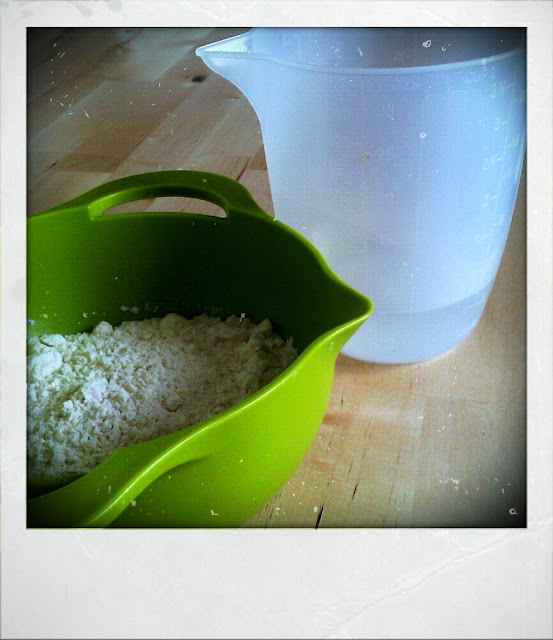Home for the summer at my parent's house in a quiet sleepy village in Yorkshire, there has been very little call for cooking as the restaurant of Mum/Dad is always in operation. :-)
Yet I could not let the summer pass me by without eating at least one really good scone.
That is not to say that other people do not make a decent scone! Far from it. But honestly, the way to get a good scone is to simply bake them yourself. Scones can be very dry and very boring but they will never be either if eaten soon after they come out of the oven!
My Grandmother does the ultimate summer tea with sandwiches, boiled eggs, salad and cakes. This yumminess is never complete without heaps of golden scones. Or is it scOnes?
"I asked the maid in dulcet tone
To order me a buttered scone
The silly girl has been and gone
And ordered me a buttered scone."

This recipe comes from a VERY old and frankly now disgusting cookbook that belongs to my mum. But the disgustingness of the book merely shows how well used it is - do not judge this book by its greasy and stained cover! Everything I ever made as a child came from that book. It's full of classics.
The recipe goes:
Mix a pinch of salt, 300g flour, 1 teaspoon baking powder and 75g cooking marg.
If using a machine, mix slowly until you get a breadcrumb consistency, or rub in the marg by hand.
If using a machine, mix slowly until you get a breadcrumb consistency, or rub in the marg by hand.
Stir in 50g sugar.
Put 1 egg into a measuring jug and then add milk up to 125ml. Add this mixture but leave a tiny bit of it to one side.
Work the mixture into a soft dough.
Roll out to just over a centimetre thick (the recipe says 12mm but I say the fatter the better!)
Use a 5cm cutter
Cut out the scones and place them on a lightly floured baking tray.
Brush the top of each with the remaining milk/egg. This will give the characteristic golden sheen. Cook in the oven @ 240°C for around 10 minutes but keep an eye on them as they sometimes take a little less time. Once they are risen and golden, you'll know that they're done.
Allow to cool, for as long as you can stand, and eat within 1/2 days.
Serve with butter, jam and clotted cream for a real treat!
We tried ours with a rather fancy gooseberry and elderflower jam - delish.
Pinkies out - it's tea time!
















